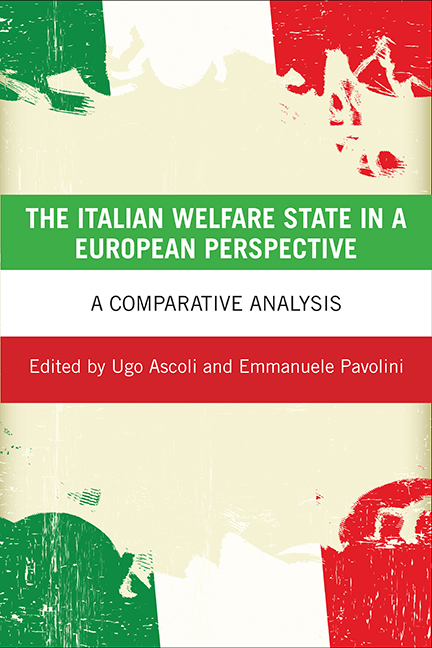two - Two decades of pension reforms in Italy: shedding light on a series of mirror-images
Published online by Cambridge University Press: 08 March 2022
Summary
Introduction
Public pension spending to counter the risks associated with old age and widowhood represents about 60% of total social spending, Such a central role of pensions in the welfare budget has meant that the welfare reform process in Italy has largely focused on old-age protection. Pension reform has thus been a vital element in the overall push for: functional recalibration, that is, reducing the role of pension spending in the overall welfare state budget; distributive recalibration, that is, reducing the fragmentation of social rights across social and occupational groups; and institutional recalibration, that is, moving towards a multipillar model.
In such a context, when we look back at the last two decades of pension policy, we see a threefold pension paradox: a sort of series of ‘mirror images’, where evidence is ambivalent and difficult to interpret. The first paradox relates to the trend in reforms. Neoinstitutionalism has told us that a costly pension system is very difficult to reform and retrench: the higher pension spending and entitlements are, the harder it is to pass reforms (Pierson, 2001). Yet, the Italian pension system has undergone many reforms over the last few decades (the first major reform dates back to 1992 and the most recent is the one passed in 2011; in-between, there were at least three major reforms and many further legislative measures). Thus, the question to address is how to explain such an intense reform process in a ‘sticky’ institutional context. The second paradox has to do with the outcomes of reforms. Many authors have stressed the huge impact of the measures introduced so far: in the long-term, pension spending will decline, as well as benefits, while supplementary funds have increased their role (Jessoula, 2012a). Italy, however, is still a big spender on pensions in Europe, and two decades on from the launch of supplementary pension funds, these still cover only a minority of workers. The same ambiguity affects the inequities produced by the system: in the past, the Italian pension system was characterised by clear segmentation of pension rights across occupational (public-sector employees versus private-sector workers and the self-employed) and social groups (eg along gender and territorial lines).
- Type
- Chapter
- Information
- The Italian Welfare State in a European PerspectiveA Comparative Analysis, pp. 49 - 70Publisher: Bristol University PressPrint publication year: 2015



